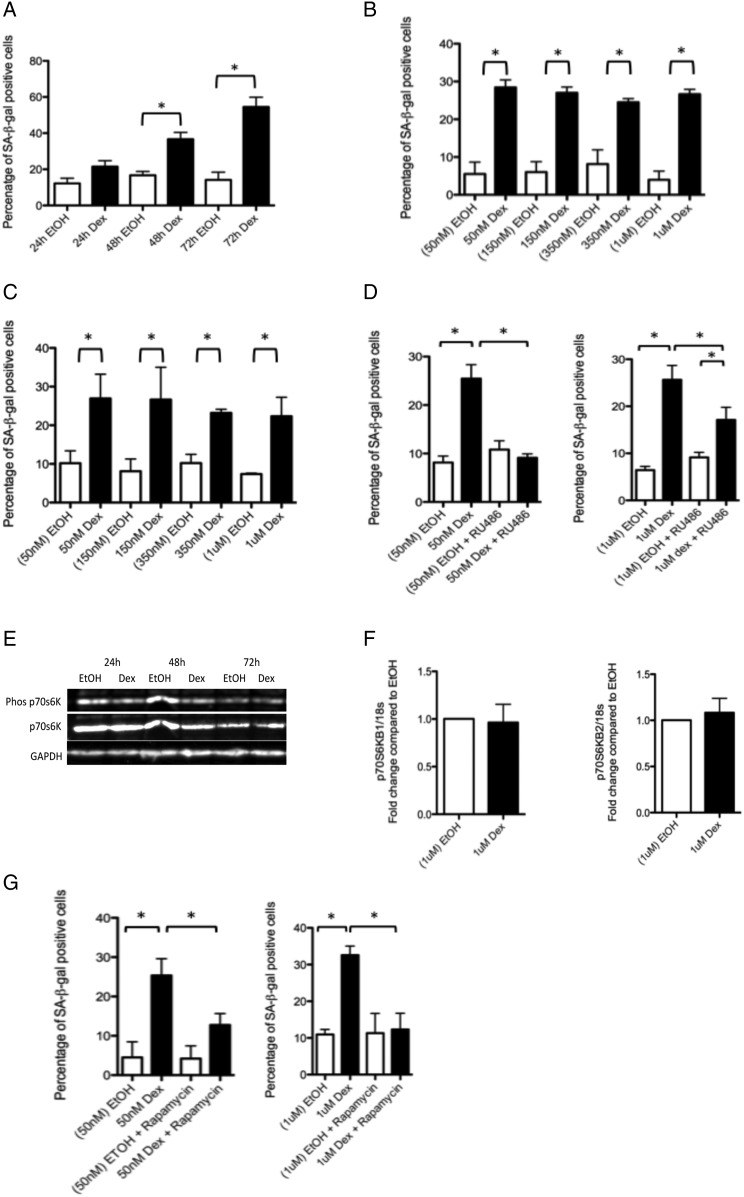Figure 1.
Glucocorticoids cause morphological and functional changes in tenocytes consistent with a senescent phenotype. (A) The percentage of SA-βgal-positive cells was significantly higher 48 and 72 h post-treatment of primary human tenocytes with 1 μM dexamethasone compared with tenocytes treated with ethanol (carrier) alone. There was no evidence of a dose effect of dexamethasone treatment on the percentage of SA-βgal-positive cells following (B) 3 days or (C) 7 days of treatment (n=3) compared with cells treated with the corresponding amount of ethanol carrier. (D) The percentage of SA-βgal-positive cells was significantly lower in cells treated for 72 h with dexamethasone (50 nM or 1 μM) and the glucocorticoid receptor (GR) antagonist RU486 (80 nM) compared with cells treated with dexamethasone alone, n=3. (E) Western blot showing levels of phosphorylated and total p70 S6 kinase, a substrate of the mTORC1 complex and an indicator of mTORC1 activity 24, 48 and 72 h post-dexamethasone (dex) treatment (1 μM) in primary human tenocytes. Western blots were conducted on protein lysates from cells obtained from three different tissue donors. Blot shown is representative of all experiments. (F) No difference in RNA levels of either of the two p70 S6 kinase subunits (p70S6KB1 and p70S6KB2) was evident in tenocytes treated with dexamethasone (1 μM) compared with ethanol-treated controls. (G) A significantly lower percentage of SA-βgal-positive cells was evident in cells treated for 72 h with dexamethasone (50 nM or 1 μM) and the mammalian/mechanistic target of rapamycin (mTOR) inhibitor rapamycin (rapa) compared with cells treated with dexamethasone alone, n=3. Statistically significant differences between ethanol (EtOH) and dexamethasone (Dex) and between dexamethasone with and without either the GR inhibitor (RU486) or mTOR inhibitor (rapamycin) are indicated by * (p<0.05).

